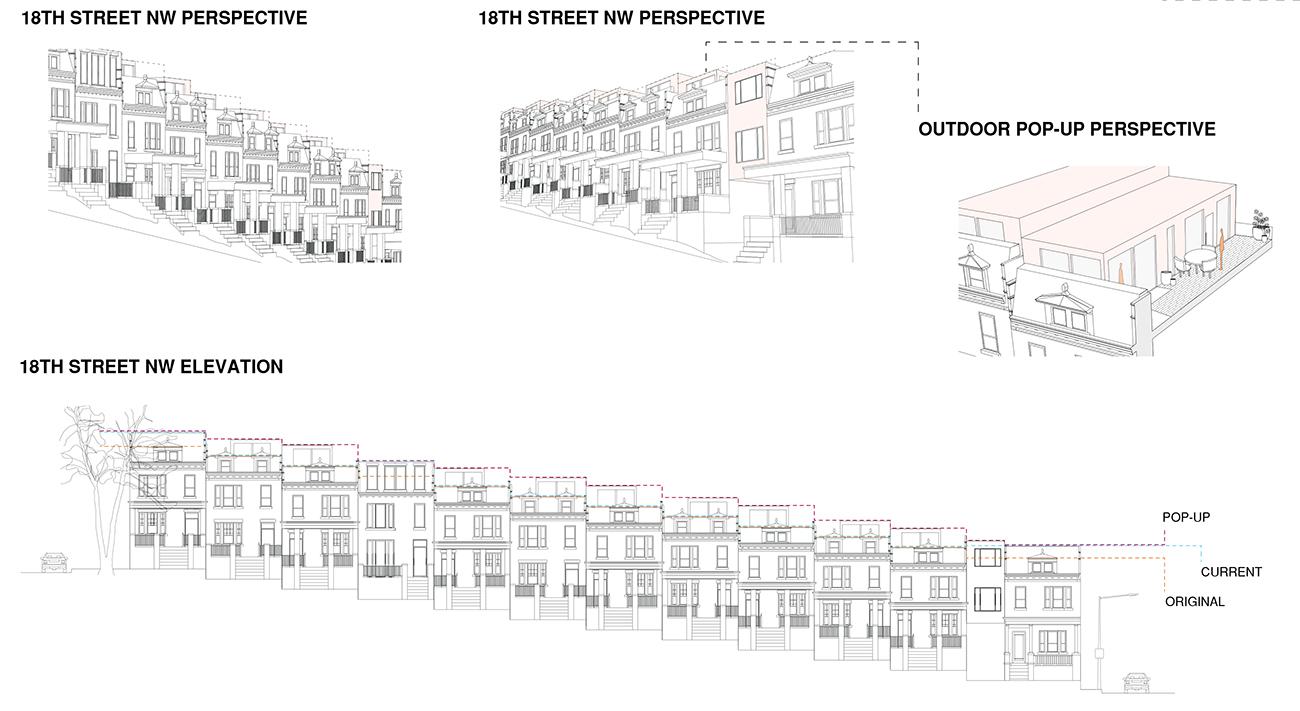Washington, D.C., is a town known for controversy. From Safe Track to Pizza Gate, D.C.’s history, politics and rapidly-changing urban landscape make it a breeding ground for spirited discourse. This summer, 11 undergraduate and graduate UMD architecture students traveled south and looked skyward to unpack another subject hotly debated in the district for more than a decade: the rise of vertical additions to historic rowhouses in Washington, D.C., commonly known as pop-ups. Zeroing in on the neighborhood of Lanier Heights, the students hoped to examine how vertical expansion affects historic architecture and neighborhood character, in a setting where builders often have nowhere to grow but up.
Part of adjunct professor Lindsay May’s summer studio, the Lanier Heights study unfolds in a 35-page, sharply-designed booklet aptly named, What’s UP, Lanier Heights. Inside, the students take a historic deep-dive into the 40-acre neighborhood and its 194 different row houses, identifying the different rowhouse styles, neighborhood demographics, real estate trends, zoning laws and the major players in the pop-up debate. A detailed timeline not only tells the history of the 125-year-old neighborhood, it chronologically breaks down the pop-up debate, from the flurry of public commentary in the mid-2000s to resident-backed “down-zoning” successfully approved over the past two years. Yet despite these changes, pop-ups are a reality for neighborhoods like Lanier Heights, creating a new challenge for residents: promoting vertical additions that are inspiring rather than unsightly and that add to the character and culture of the neighborhood.
“We wanted the community to see that there is a possible pop-up that can preserve the building’s integrity,” said Brian Houstle, a rising junior who worked on the project. “It’s not a matter of if it will happen, but how. We wanted to show them that there are options.”
The intensive nature of summer studio—which meets every day, Monday through Friday, for six weeks—is a departure from what students are accustomed to during the year and more akin to a client-based project. Students visited Lanier Heights several times, interviewed community members and architects, attended community meetings, and toured a D.C. row house. The project culminated with a final review that included potential pop-up designs at a community space in Lanier Heights for neighborhood residents and involved DC-area industry professionals. Lindsey May feels that inserting themselves into such a sensitive topic helps “plug” the students into larger community conversations, shedding light on the impact of design and providing a sense of understanding to various points of view.
“I hope that the students were able to understand that their architectural work, starting as early their studio projects, can have real meaning, value and implications for the built environment,” said May. “The students had to formulate their own stance and articulate where they fell on the issue. I hope that they were able to sense the weight their Lanier Heights projects carried and the projects' legitimate place in the larger context of architectural issues in D.C.”

